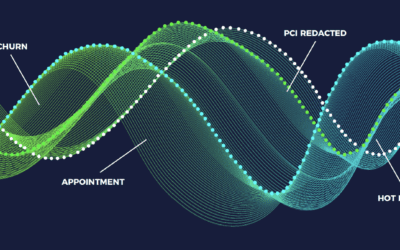Millions of conversations pour into contact centers worldwide every day. They carry priceless amounts of information that should be used to learn about customers: What is the ideal price-point? Which products will close the deal? Who is the decision maker? What competitors are in play?
Successful sales teams analyze their phone calls to turn them into actionable data that improves scripts and tactics that aren’t working–and hone in on ones that are. By digging into this data, managers and agents can better understand scenarios like how much should to let a customer talk, when to bring up pricing, and how to interpret a prospect’s answer to key questions.
If your sales representatives already know what works before they pick up the phone, they’ll be much better equipped to overcome objections, qualify prospective leads, diffuse churn-inducing issues, and ultimately become substantially more effective on the job.
Helpful Tips to Increase Sales
There are many ways to go about boosting sales, but it’s the ways that are tried-and-true that you want to implement into your contact center. To support that, Chris Orlob analyzed over 25,000 sales calls, and we’d say that his insights support building a strong foundation toward a successful sales center.
Talk Less
The average representative may talk as much as 75% or more of the total call time. On the other hand, the top closers spend more time listening and less time talking. Top closers spend 41% of the time talking – that’s less than HALF of the time!
What this means
The average salesperson does not understand the value or benefit of the customer they are trying to sell to. If you are pitching for 3/4 of the call and not making a deal, there was clearly some disconnect.
Pricing is Key

The sweet spot for mentioning price is three to four times during a call, preferably after value has been established. This tip probably feels very straightforward, as the topic of “price” and “cost” is usually the push for a potential customer toward making their decision. However, it was shown that if pricing is mentioned too little, it has a similar effect as mentioned too much.

When pricing is discussed too early, chances of winning the deal become slim. In the graph above, you can see that the top closers mentioned pricing toward the end of the call (once the value and benefit has been proven) rather than skew the rest of their presentation by mentioning it too early.
The Power of “Probably”
Sometimes all it takes is one word: it turns out that when a potential customer uses the word “probably” to estimate project timing, the accuracy of closing the deal within the estimated time soars to 73%. This means that hearing this term is a great indicator that things are probably moving in the right direction with a potential client.
Phrases like these are great to hear on a sales call:
- “We’ll probably be ready to go live next month.”
- “I’ll probably have a decision made by next week.”
- “I think we’ll probably be moving forward with you guys.”
What other insights can you get from spoken interactions?
These kinds of speech analytics learnings can be garnered from any batch of recordings a business may have. Imagine what you could find in last month’s customer service calls, or inbound leads from an advertising campaign? Harnessing the actual Voice of the Customer is the most accurate way to learn what they like, want and need.



